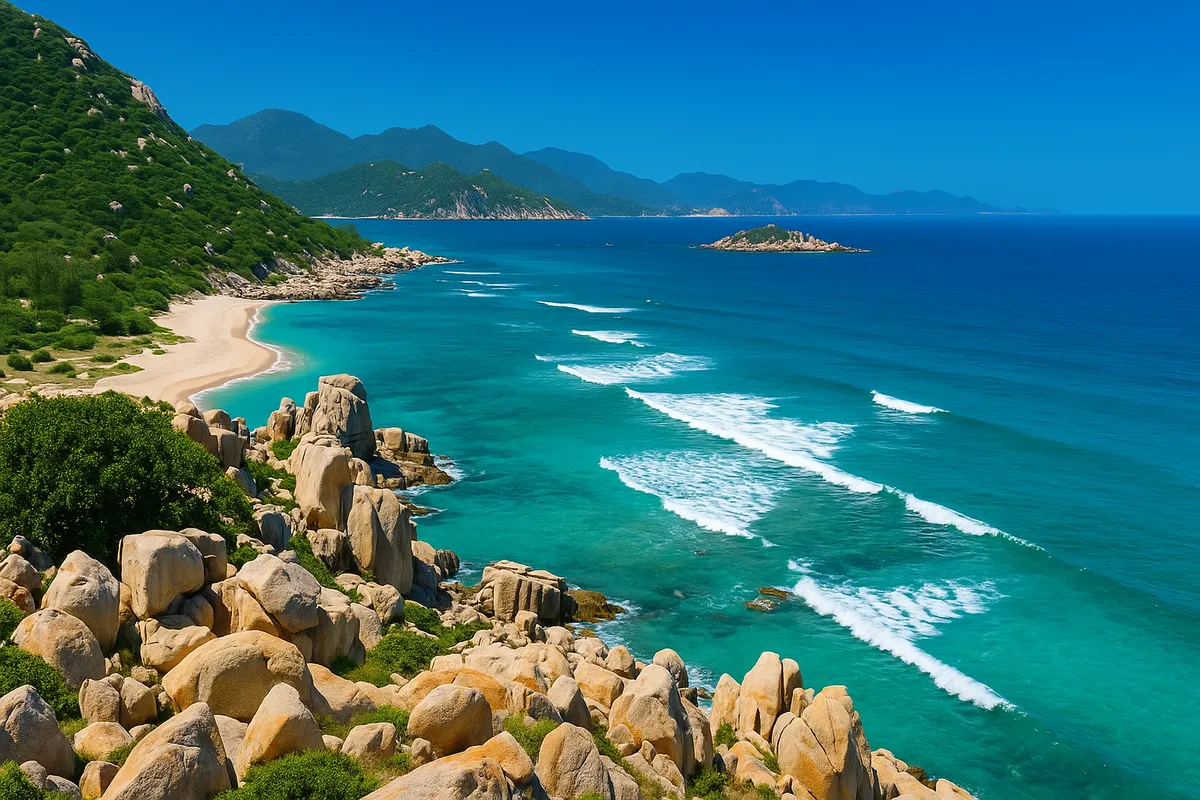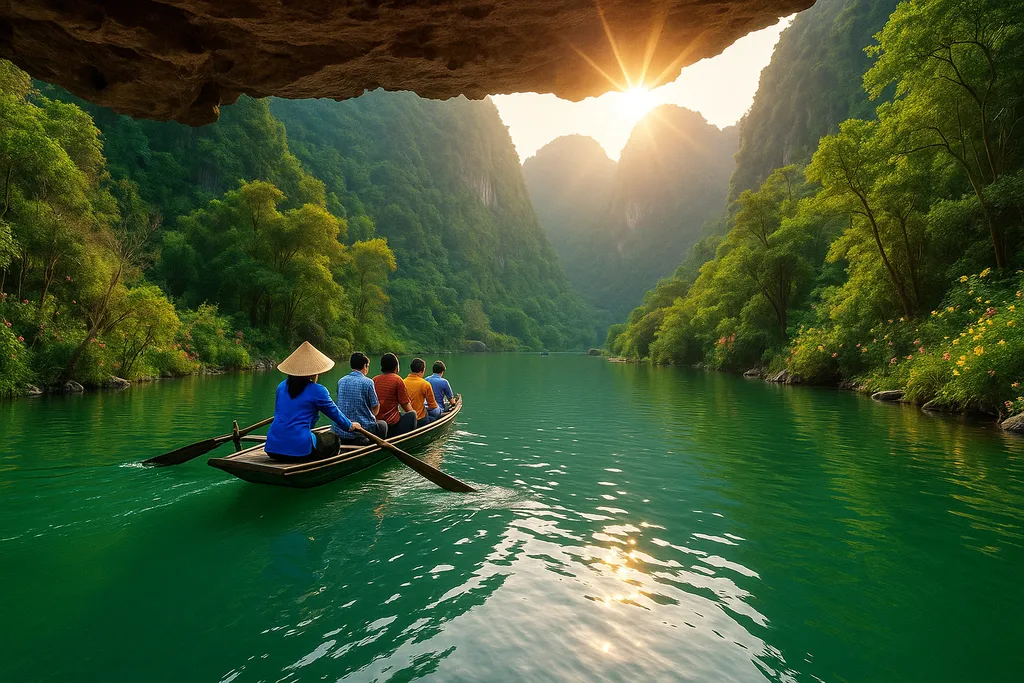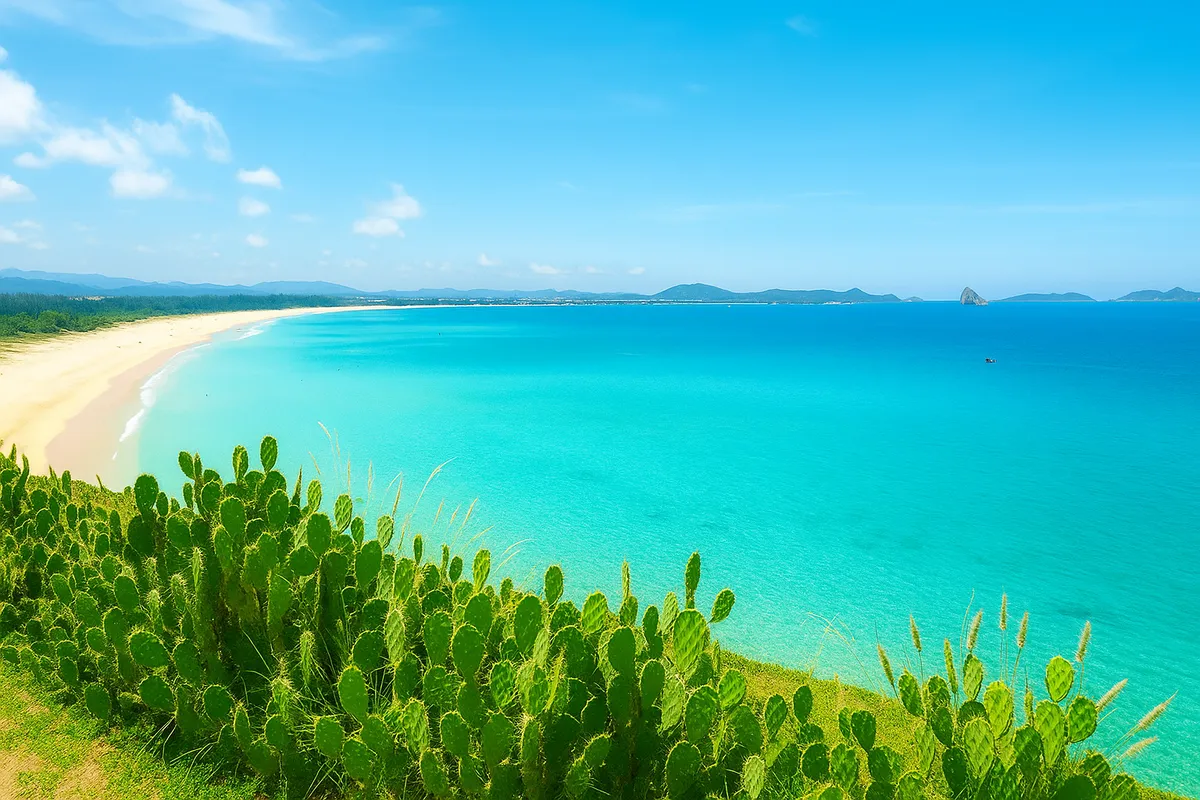Langbiang and the love song in the mist in the middle of the great forest
- Monday, May 26, 2025, 14:22 (GMT+7)
Langbiang and the love song in the mist in the middle of the great forest
Langbiang is not just a place where nature exists, it is a place where nature speaks. Like a giant green carpet woven from pine forests, mist, and highland winds, it opens up a space where every step feels lighter, and every thought seems to dissolve into the white clouds. From the mountaintop, Da Lat appears as a dream breathing beneath the haze. From the foothills looking up, Langbiang is an open question, inviting each person to find their own answer through the journey itself.
Langbiang is more than a mountain, it is a miniature universe of culture, legend, nature, and memory. Located about 12 kilometers from the center of Da Lat, in Lac Duong town, Lam Dong province, this is where the sky meets the human soul. The twin peaks, Ong and Ba, stand side by side like the main characters of a sorrowful love song, while each visitor becomes a quiet supporting role, feeling and connecting in silence.
Beneath its majestic beauty lies an endless love story. The K'Ho people tell of K'lang and H'biang, two lovers forbidden from being together due to tribal hatred. They chose death to be united, and from their petrified hearts, the twin peaks were born. A sad tale, yet it makes the wind colder and the clouds softer at Langbiang than anywhere else.
Langbiang is the only place in Da Lat where you can view the entire Dan Kia lake from above, where sunset turns the water into a dreamy orange ribbon, and sunrise awakens the valley below like a forest love song. On some mornings, the clouds drift through the pine trees like flowing milk, and birdsong echoes like a lullaby from the motherland. The winding trails, sometimes misty, sometimes sunlit, seem to test the patience of those with a passion for exploration.
At the foot of the mountain lies the Hundred Year Valley, where the flickering fire mixes with the sound of gongs, where jar wine and kitchen smoke tell stories of the K'Ho people. Visitors there do not just listen, they live within the breath of a highland culture that remains sincere and untouched. Some say that on a bright moon night, the sound of the T'rung instrument at Langbiang is more melodious than the wind itself. And though it is written nowhere, that sound lingers long in the hearts of those who have heard it.
There are many ways to reach the peak of Langbiang, each offering a different experience. Hiking takes about three hours through dense forest where dry leaves crackle underfoot, the sharp scent of pine resin clings to your jacket, and wildflowers quietly bloom beside the trail. If you choose to take a jeep, it roars through sharp turns, the wind slapping your face as if testing your courage to raise your eyes and face nature head-on.
At the summit, the sky is no higher, but the heart feels wider. The space makes time slow down, and all noise dissolves into the wind and distant gazes. You could sit there for hours, listening to the mountain speak through rustling leaves and feeling clouds brush your shoulders like an unexpected embrace from the sky and earth. This is also one of the rare places in Vietnam where you can go paragliding from an altitude of nearly 2000 meters. Just a few running steps and a jump, and you shed all burdens, letting the wind carry you into the open air.
Few people know that Langbiang is part of a UNESCO recognized world biosphere reserve. Deep in the primary forest live hundreds of rare species of plants and animals, including orchids that only grow on limestone slopes at this special altitude. There is also a tree over 400 years old, considered a sacred landmark by the locals, where ancient rain prayers and forest rituals once took place.
The best time to explore Langbiang is when the sun is warm but not harsh, and the sky is clear like a blue mirror, typically from January to July. But for those who love mist and clouds, the year’s end brings a magical allure. Some mornings, the sky is gloomy and visibility limited to just a few meters, but walk a bit further and a sea of clouds opens up, leaving your heart quietly stunned. Each season at Langbiang is a different poem, with its own rhythm and imagery, never repeating.
Getting to Langbiang is not difficult. From Da Lat city center, simply follow Phan Dinh Phung street, turn onto Xo Viet Nghe Tinh, and head straight toward Dan Kia. The journey takes about 30 minutes but is enough to feel the transformation from city to highlands. Many choose to ride a motorbike to fully enjoy each curve and the cool breeze greeting them like a welcome.
Once you arrive, do not forget to take a deep breath to capture the scent of pine, fresh grass, and red basalt soil deep into your lungs. And if you stop by one of the local markets near the foothills, try the gentle sweetness of wild honey or a warm serving of bamboo sticky rice with the fragrance of grilled glutinous rice by the fire. These dishes are not just tastes, they are memories.
Langbiang needs no flowery introduction. It is already a grand poem, written in the language of stone, trees, and clouds. It stays in people’s hearts through nothing more than a sudden chill in the wind or the dim light slipping through the pine branches at dawn. Between the mountains and the clouds, there is a silence called Langbiang, a phrase once shared on social media but perhaps the most accurate reflection of the feeling it leaves behind.
And if someday your soul needs a place to pause, to understand itself better in a world that never stops turning, come to Langbiang. Not to escape, but to return, to return to something raw and pure, where mountains keep their promises and the wind gently carries you home to where your heart has always longed to be.

 CHECKIN.VN
CHECKIN.VN








Share on